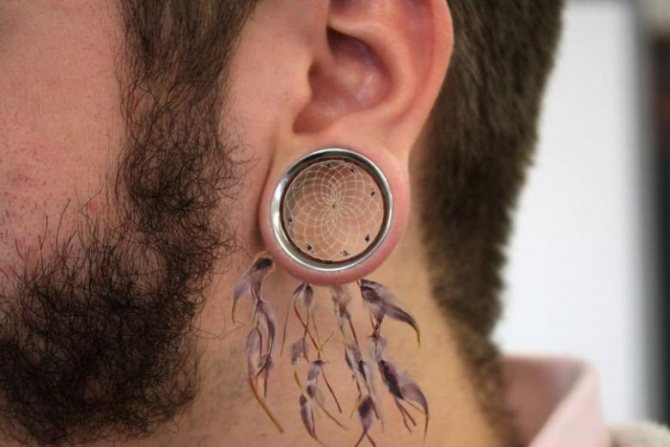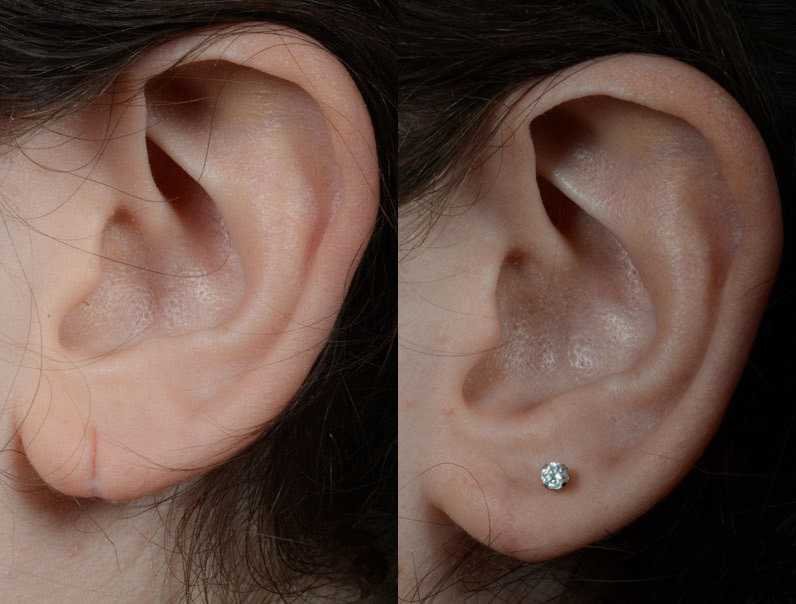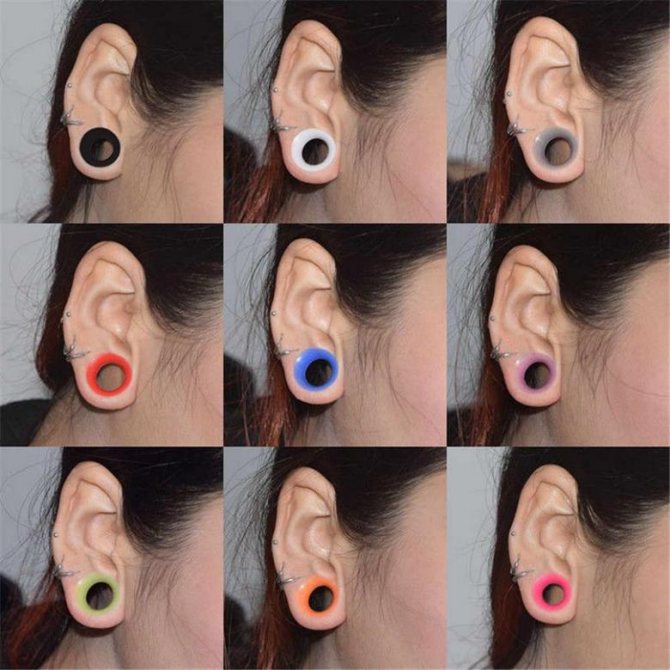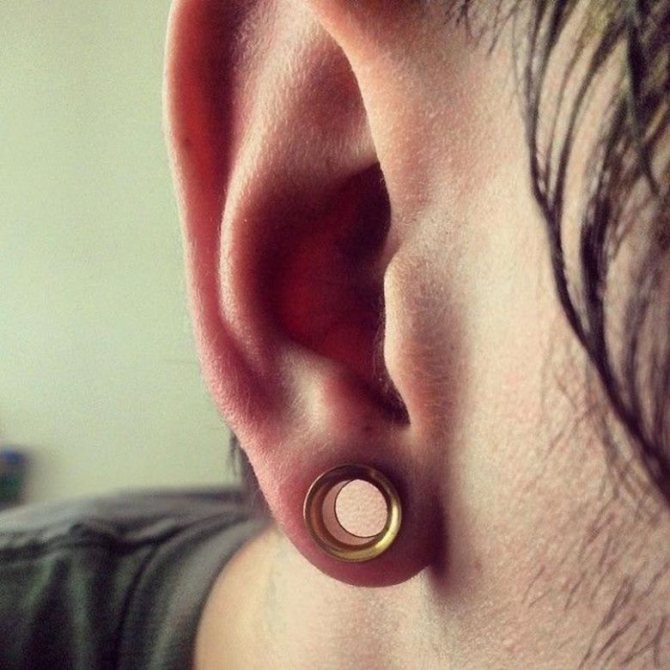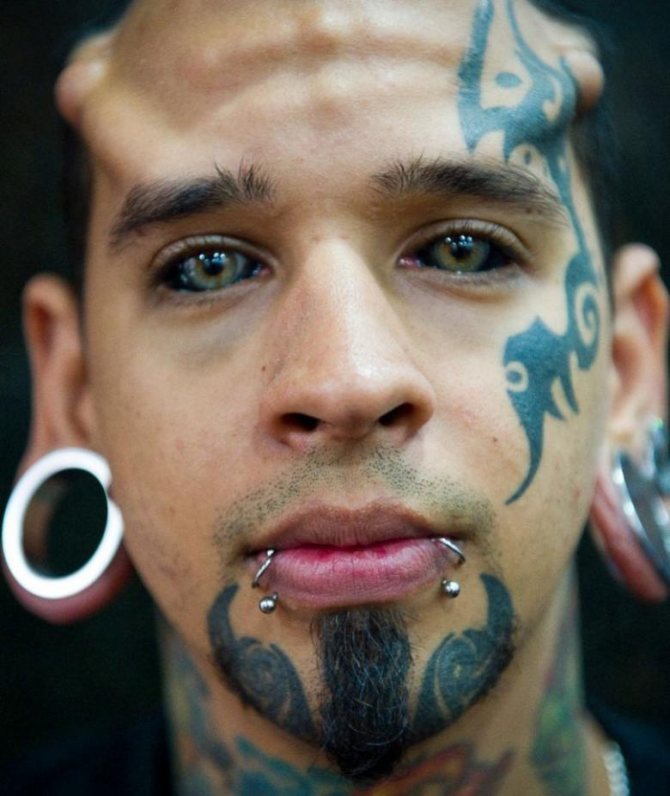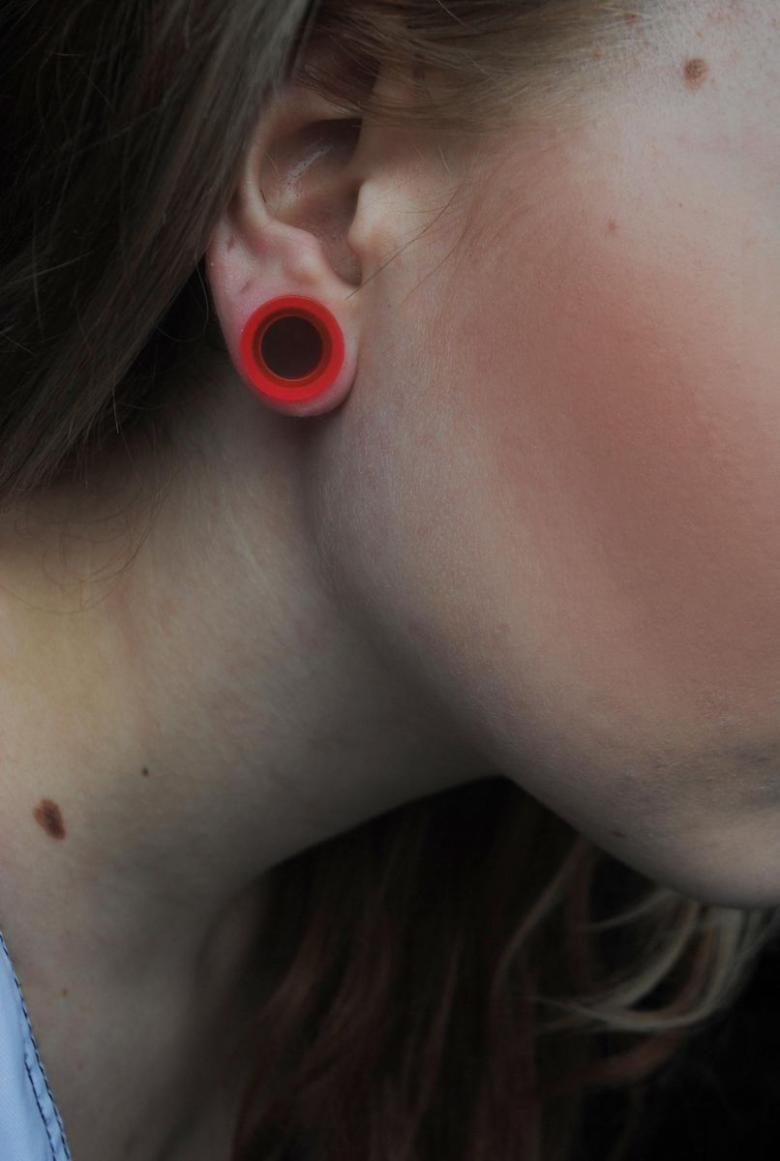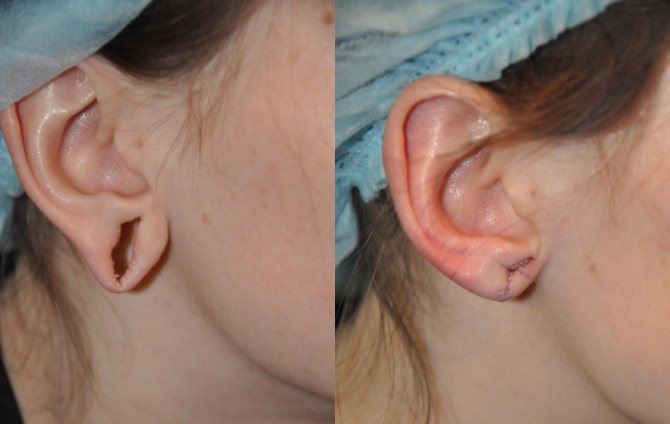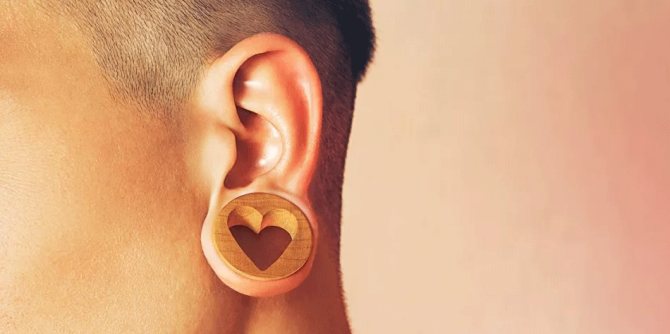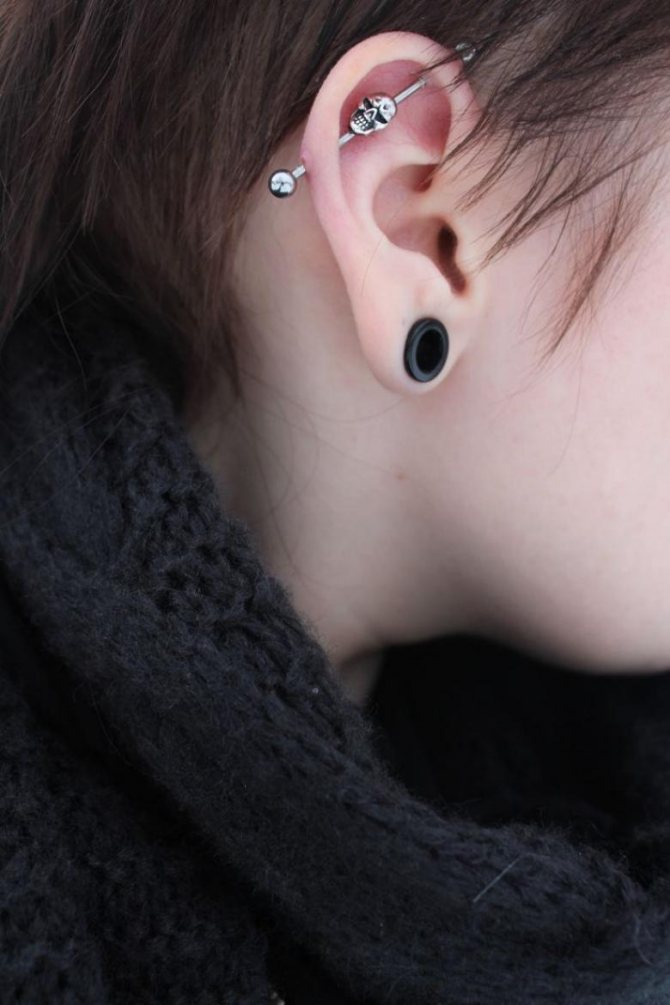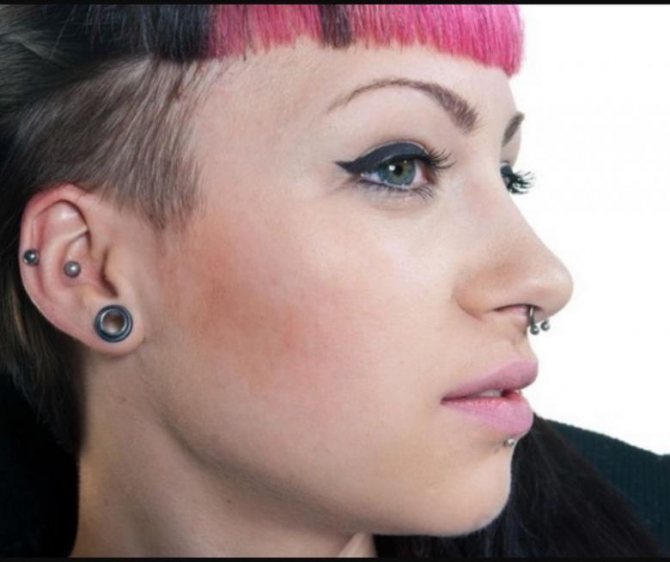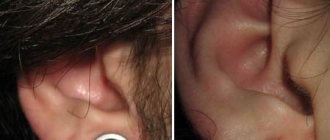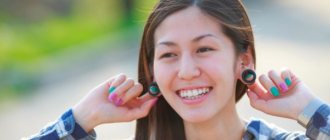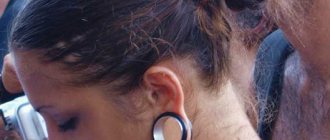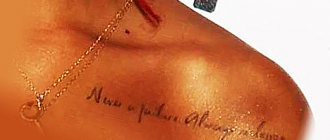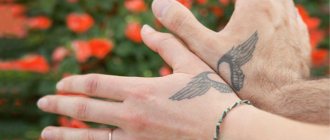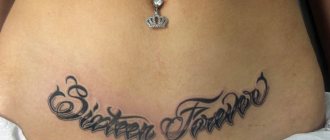How do I make tunnels in my ears?
- To begin with, you should have a standard healed ear piercing. Once it is healed, not itchy or painful, you can begin to extend the lobe.
- To avoid scarring, the extension should not be more than 1-2 mm at a time. If the transition is abrupt, you can't avoid inflammation and blockage (we will tell you about these dangers below).
- Wash your hands with soap and water, disinfect your earlobe and stretching tool with chlorhexidine.
- Massage your earlobe well to improve blood flow.
- Lubricate the piercing and taper with lubricant or oil. Many jewelry stores sell professional lubricants, but you can also use vegetable-based lubricants (coconut oil or jojoba oil).
- Start slowly and gradually pushing the cone through the hole, inserting the thinner side into the piercing first. Painful sensations may occur.
- It is worth inserting the tunnels from different sides after the procedure to avoid a blockage.
- Insert the plug into the thicker end of the taper so that you can insert it immediately into the stretched piercing.
- Insert the plug into the hole as soon as the taper goes through. There will be some redness and swelling.
| Important: It should take at least 6 weeks between extensions. Do not move on to the next size if you notice redness, swelling or irritation after 6 weeks. Adjust to your healing patterns, if you ignore skin reactions, things can get ugly. |
Tunnel Stretch Scale (Sizes)
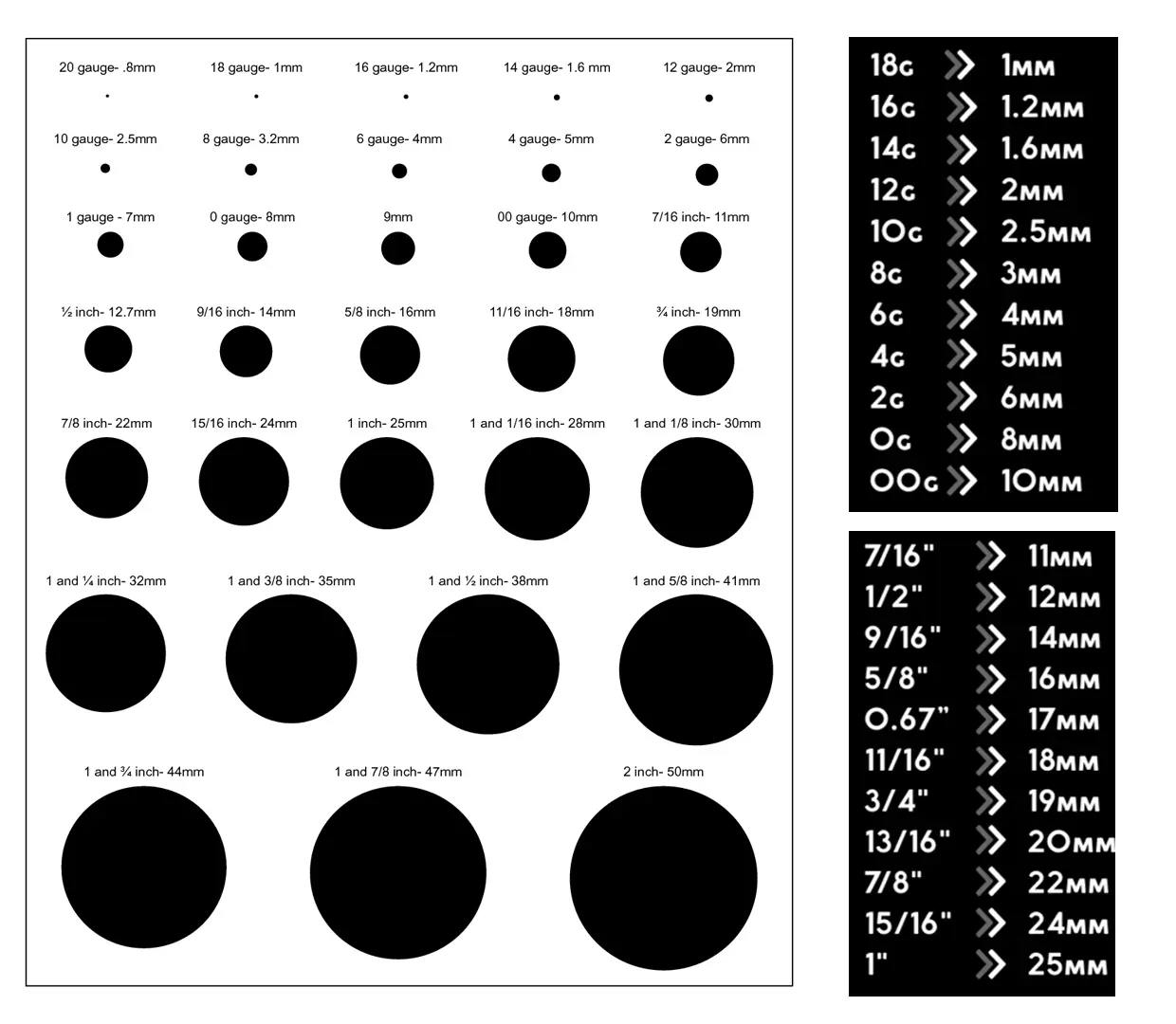
If you want to drastically increase the diameter, then you can try punching. Punching is a surgical procedure where a segment of the lobe of the desired diameter (up to 10 mm) is cut out with a punch (round knife). This method is suitable only for those to whom the anatomical structure of the lobe allows it.
Types of piercings
Several methods of ear piercing are practiced. The procedure can be performed using a catheter, a gun or a disposable system. In addition to the lobe, cartilage piercings are also often done:
- chelix - the outer rim of the ear (through the curl);
- scaph - the navicular fossa (through the base of the curl);
- The ossicle - a small cartilage over the opening of the external auditory canal.
There are also other ear puncture options:
- conch - lower shell cavity;
- hand - the lower stem of the antral lobe;
- dyte - the lower inner part of the helix, the cartilage adjacent to the face;
- tragus - privokozelok, part of the cartilage above the lobe;
- snag, the vertical protrusion of the antispinx.
How to care for the ears during and after the stretching?
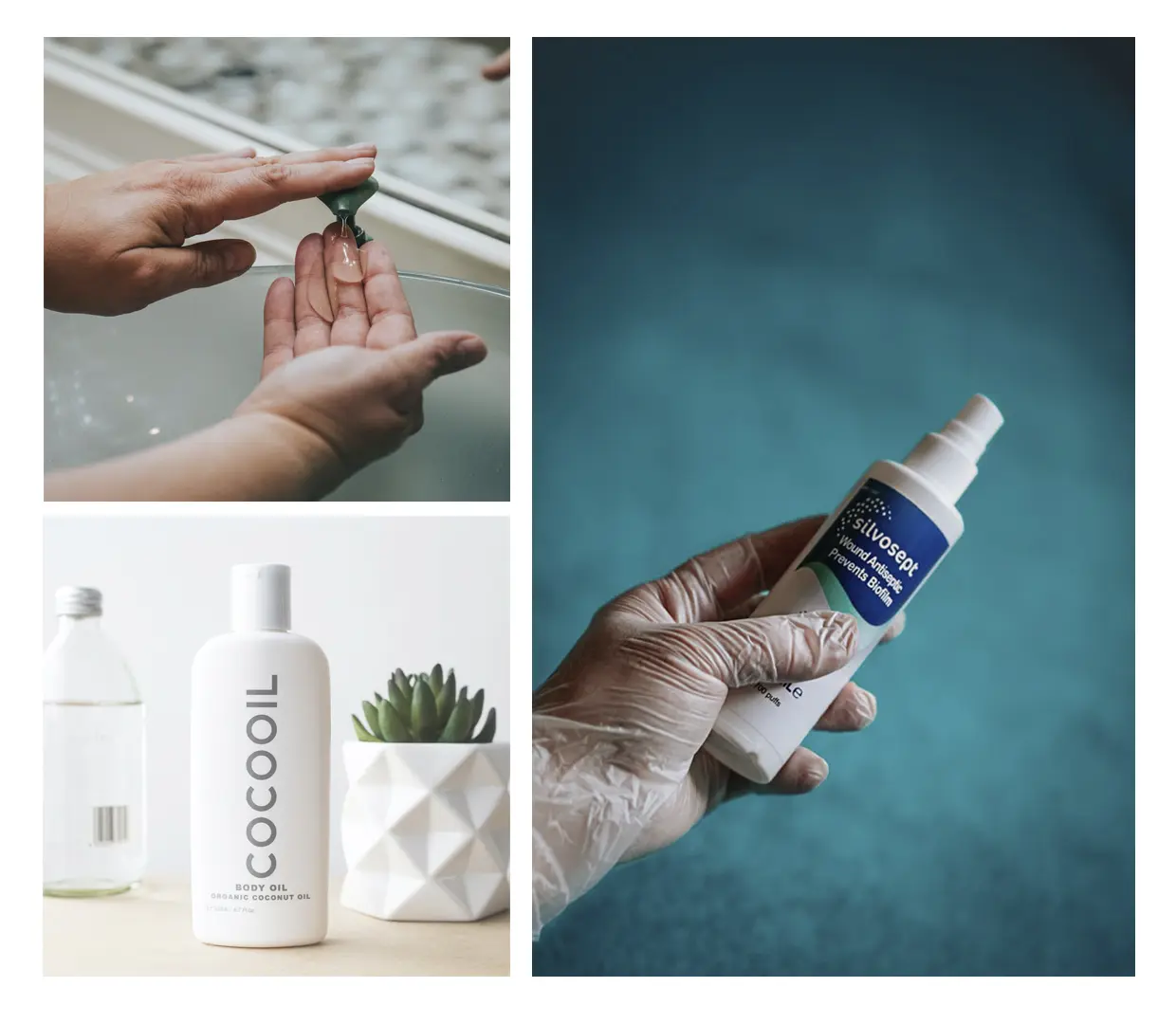

After the first stretch, the most important thing is to wait and let the tissues recover. If you stretch your ears too quickly and too hard, you could tear or damage the tissue.
Here are some tips for taking care of your ears during the process and after you reach your desired diameter:
- Wash your tunnels and plugs at least twice a day with warm water and soap.
- Massage your earlobes at least once a day with coconut oil, jojoba oil, or other safe oil to prevent scarring.
- Store tunnel tapers in a separate box, do not leave them on a shelf in the bathroom or on a table.
- Do not touch your piercings with dirty hands to prevent bacteria from getting in.
- When you remove the jewelry overnight, treat it with antiseptic.
- Don't worry about a little odor. There may be an unpleasant odor in the puncture area, it is dead cells that should not be touched. Over time, the skin will recover and the smell will disappear.
From 5,000 p.
Beautiful massive earrings or the fashion of tunnels in the ears - there are different preferences. But often beauty or following a trend is fraught with consequences, such as earlobe deformity or tearing. A damaged or torn earlobe is unaesthetic, and the acupuncture points on it can affect your general well-being. A plastic surgeon can help and perform earlobe reconstruction7
What can be used to enlarge the tunnels?
The following methods can be used to enlarge the piercing: cones, plugs, and tape.
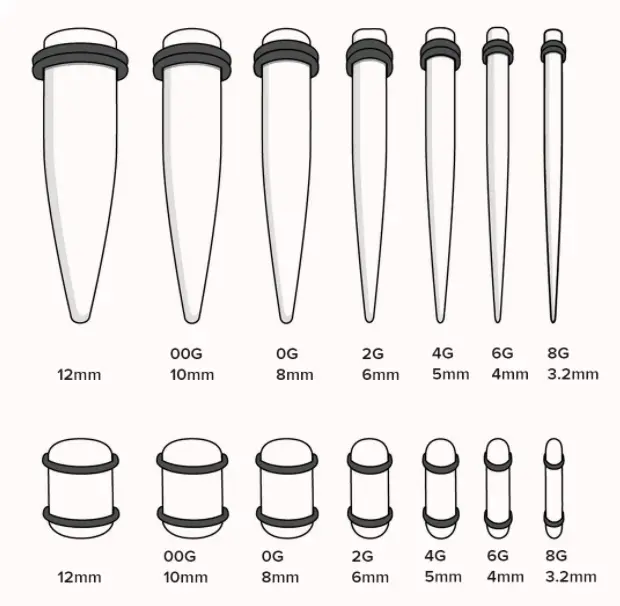

Cones
These are long spikes that you insert into the piercing to stretch the skin. They come in different sizes, depending on how much you want to stretch the piercing. There are acrylic or steel ones, the latter are more expensive because with them the stretching is less painful and safer.
Plugs
These are round, barrel-shaped jewelry. They can be made of different materials:
- Acrylic;
- Steel;
- Titanium (hypoallergenic version);
- Silicone;
- Glass;
- Wood;
- Polished stone.
Many plugs have "expanding" sides, which makes them easier to install.
The price of the operation
The cost of the piercing and further lobe stretching service depends on a number of features:
- The complexity of the operation - whether a piercing is required or only a stretching is needed;
- The method of obtaining the tunnel - by expander or incision, perforation;
- The need for anesthesia, the price of antiseptic and anesthetic.
- Rates for dilators and earrings, which are purchased in the salon (can be purchased separately in the store).
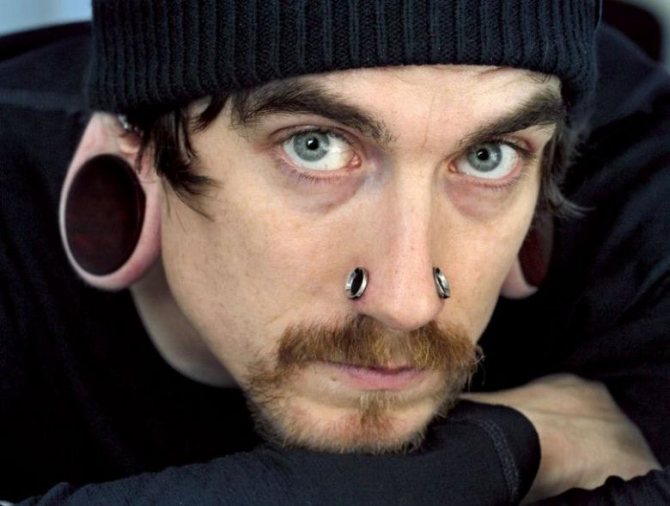

Of course, each salon has its own pricing strategy, but you should not save money here. We are talking about sanitary rules and safety, because health problems cost more than small savings. That's why you should only turn to professionals with licenses.
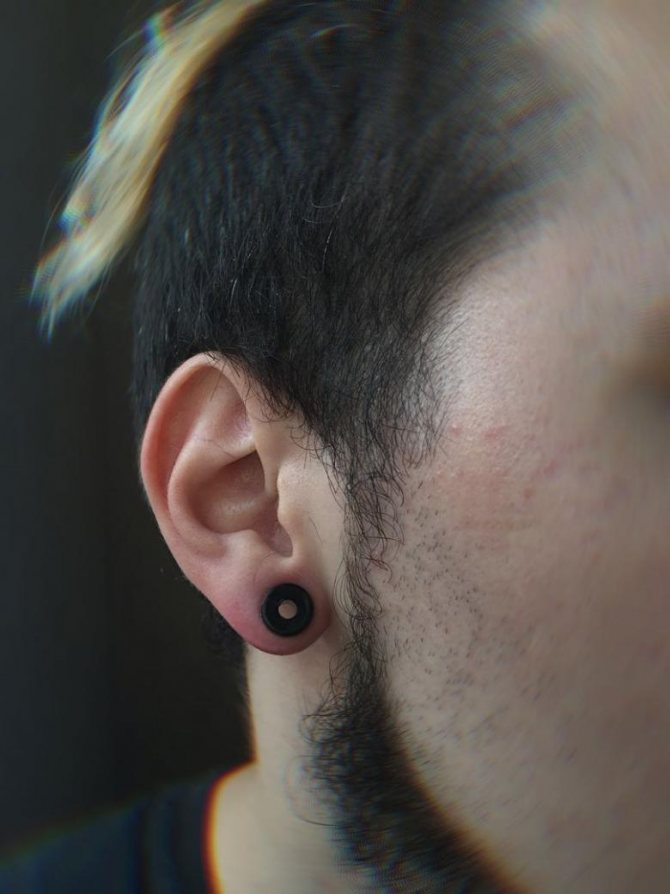

What is a blowout?
A bloat (blowout) is one of the most common complications of an ear stretching tunnel. It is a ring of scar tissue that forms behind the jewelry and gives the piercing the appearance of being turned inside out. These are unaesthetic growths that appear because the hole is stretched too quickly, stretching only one way. They cause sharp pain and inflammation.
Blowout does not grow immediately, but gradually. It is treated only surgically - excess scar tissue is cut off and the edges of the wound are stitched together.
Contraindications
The piercing of the left ear/both ears is quite safe. However, like any cosmetic procedure, it has a number of limitations. Therefore, you should consult with a specialist before going for a session. In the presence of contraindications, the jewelry can easily be replaced with a dummy. It is better to give up the idea of getting a piercing in the following cases:
- period of pregnancy;
- problems with blood clotting;
- The presence of a history of craniocerebral trauma;
- autoimmune, cancer pathologies;
- inability to make punctures due to the peculiarities of anatomy;
- risk of allergy to anesthesia and/or earring material (gold and silver jewelry can also have a negative reaction);
- Colds of bacterial and viral etiology (until full recovery).
Creams for resorption of scars
The next method, how to remove a hole in the ear from an earring, is the use of various creams for resorption of scar tissue. They are applied to the problem area or made compresses at night. Usually you have to wait quite a long time for the result - weeks and sometimes months.
Also, judging by customer reviews, fresh punctures heal well and resorb recently formed scar tissue. But if the problem is more than 3 years old, this remedy may not help.
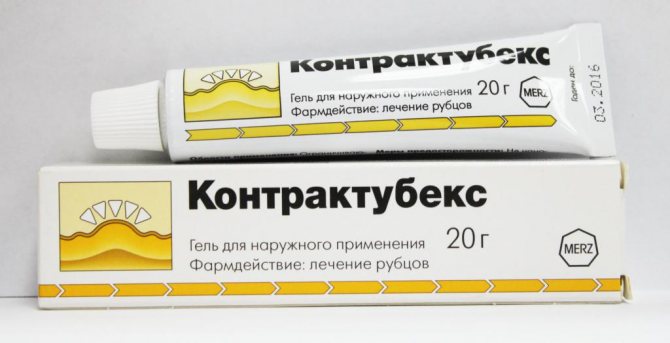

Will the piercing heal if you don't wear earrings for several months?
They may or may not heal. It all depends on the body's ability to regenerate and the accompanying conditions. For example, people who want to get rid of ear piercings often use special regenerating ointments - such means do not guarantee, but can help.
If a person's ability to regenerate is high, it may be enough to remove the earrings for 1-3 months, and the piercing in the lobe will gradually begin to tighten. Of course, the puncture site may still be visible for a long time, but the earring can no longer be inserted - at least not without effort. If the ability to regenerate is low and the hole is made correctly, the long-awaited "overgrowth" will not come - you can stay with pierced ears for life or go to a surgeon who will simply sew up the holes.
Do your ears grow back if you don't wear earrings for two weeks?
If the piercing is fresh, after a break in wearing earrings, it may seem to overgrow. If you try to insert an earring into your ear, you feel resistance, and to the touch in the lobe you may feel a "lump". In fact, most often this lump is a pierced hole, it is just difficult to get into it. Even with "fresh" punctures, inflammation often occurs - the lobe around the hole is a little swollen, red, and there may be suppuration. Such a process gives the feeling that the hole is overgrown, but you just need to remove the inflammation - treat the lobe with antiseptic, and then try wearing earrings again. If the inflammation is not removed, the holes can overgrow.
Punctures in the ears will heal quickly if they are made recently and inflamed - the body directs its forces to regenerate, a "cork" appears in the place of the puncture. Also, a hole in the ears can become infected if it is pierced in the wrong place - in the wrong earlobe zone or at the wrong angle. But even in this case it is possible that the hole will not get infected, but will just bring discomfort - it can get deformed (stretched) and hurt.
If the piercing is done long ago and correctly, the ears will not overgrow. At least, that's what happens in most cases - when the piercing is done in the anatomically correct place and a long time ago, the body will not seek to "overgrow" it and thus get rid of it. Although, if a person has an incredible ability to regenerate, the holes in the lobe can tighten even after 10 years of wearing earrings. True, how much for this will have to not wear jewelry - it is difficult to say.
Advice from specialists
When a person starts wearing large earrings designed to stretch the earlobe, he should follow certain recommendations. First of all, from the very beginning of the process, it is worth giving preference only to products made of the right material. So, not quite successful options for the procedure of this type are wooden and silicone accessories: wood is capable of swelling under the influence of water, and silicone is completely airtight, which significantly increases the risk of infections. The ideal earrings are those made of titanium, glass or medical steel. With regard to products made of other materials, they should only be used when scarring has already occurred and no further enlargement of the hole is planned.
There is an opinion that putting weights on the earrings can significantly speed up the stretching process of the tunnel holes. In fact, this is not the case, because in this case the pressure is exerted exclusively on the lower part of the accessory, which increases the risk of earlobe rupture, as well as reducing its density.
During the ear lobe stretching procedure, most specialists recommend taking vitamin complexes, as well as eating a proper diet. Such advice is due to the fact that certain natural components and minerals greatly accelerate the healing process of the skin, as well as reduce the risk of irritation. These include vitamins B, C and E, as well as echinacea extract and various antioxidants.
In addition, experts often express some warnings. So, if in the process of stretching there are painful sensations or blood appears, it is worth replacing the accessory with a smaller one and continuing to make lotions from the saline solution. It should be understood that ignoring this process will lead to various complications in the form of tissue rupture and subsequent scarring.
Earlobe plasty after tunneling
Surgery performed to correct earlobes is called "otoplasty". Its purpose is not just to sew up the hole, but to return the ears to their correct shape, restoring damaged or missing segments.
Surgical suturing of holes after ear tunnels is done in several cases:
- Scars, which are corrected not only after unsuccessful piercings, but also after trauma.
- Elimination of overstretching of the earlobe after earrings. Jewelry stretches it because the lobe is made up of fatty tissue and skin, which has a natural limit of elasticity. Stretching can be not only from tunnels, but also from ordinary earrings that are too heavy.
- Tearing at the place where the jewelry is worn.
When it is time to stop...
Anyone who is consciously interested in how to stretch tunnels should clearly understand the fact that at one point they will need to stop. It is often noted in the recommendations of experts on the subject that the first signal to end the process is the formation of lacerations or significant thinning of the earlobe.
It is not uncommon to find that after earlobe piercing is done, a person begins the procedure of enlarging the obtained opening incorrectly, which also results in microtrauma and large lacerations. In this case, you should urgently reduce the size of the inserted cone or earring, and then massage every day with a special oil.
An important point is to keep your ears clean at all times
While wearing ear cones and ear plugs it is important to keep your ears hygienically clean.
In order for the stretching process to take place properly and without unpleasant manifestations, it is necessary to make lotions every day. The solution for them should be made on the basis of sea salt, a pinch of which should be combined with a cup of warm water. During the first week after the change of cones or plugs it is necessary to wipe the earlobes twice a day - this remedy helps to effectively remove small tissue particles that remain on the ears during their healing process, as well as the protruding crust.
Adult and Child Ear Piercing - Important Things to Know
How old can a child's ears be pierced? Naturally, there is no unambiguous universal age for ear piercing. First of all, you need to honestly answer yourself the following questions:
- Why do you want to pierce your child's ears?
- What are you most afraid of? Reasons:
- Maybe you remember how scared you were and want to pierce your child's ears as early as possible
- It's annoying that so many people often ask you if it's a boy or a girl.
- Everyone they know has pierced their babies' ears, and you don't want your child to fall behind in anything.
- The baby is asking very much himself
The most common fears:
- Causing pain to the baby
- negative consequences of piercing
- Making a decision for your child that he or she will not approve of at a conscious age
If you are driven by the first three reasons, you need to realize that you are doing this primarily for yourself. Think about it, if you were a child, would you approve of the same behavior of your parents. If you are sure that your baby will only thank you in the future for the pierced ears in early childhood, the responsible approach ear piercing will not do any harm. But if, however, there are doubts, it is better to postpone the procedure. Piercing the ears if desired, you can at any age. The easiest case is when you are interested in ear piercing at the request of a child. All you have to do is study the question from a medical point of view. Fortunately, there are few restrictions. Almost all medical professionals will recommend an age range of 3 to 11 to 12. And if your child has made up his or her own mind and asks for pierced ears, he or she most likely falls into this age range. The age of three years old is explained as follows: A younger child is more difficult to tolerate inflammation, which is not impossible with a piercing procedure. Many medications have an age limit of 2-3 years, so there may be difficulties with medical help in case of complications A small child is difficult to explain that during the healing period the ears should not be touched, the child grabs everything, can get dirt, get caught in the earring or try to remove it Ear piercing treatment can bring discomfort to the child, and the little unsettled stubborn girl may rebel against the unpleasant procedure Baby ears are undergoing changes, the final formation of cartilage and the auricle In contrast to older age, when children often want to, but are afraid to pierce their ears. However, it should be noted that in the first case, you will get rid of the problem of fear, but you risk showing selfish tendencies and imposing your desires on the child, and you will also have to be very responsible in choosing a specialist and the care of the puncture because of the vulnerability of a very young person. In the second case, the child's choice will be conscious, but he or she will have to face the feeling of fear and expectation of pain. In adolescence (after the age of 12), they will have to go through a difficult and longer healing process. To be fair, we want to note that modern piercing techniques are much less painful than those used to pierce the ears of our parents, but this has not stopped those who really crave to see beautiful stones in their ears.
How to prepare for a child's ear piercing?
The first stage is passed: the decision to pierce the ears is made. Your next steps: study contraindications, consult a doctor if necessary
- choose how to pierce
- decide on the location of the procedure
- Wait for a suitable time
- If the baby is not infant and can already understand, it is necessary to tell beforehand, without intimidating, what to expect, so he could be psychologically ready
Going to a salon
Today people get their ears pierced in the most unexpected places. The hole is made not only in the lobe, but also on the curl of the auricle and the inner part of the cartilage. Also, salons are approached to make tunnels. These are holes of 1-5 cm, sometimes even more. They are made in two ways. The more correct method is to punch a small hole and gradually stretch it to the desired size. In the process, the rim rings are changed from smaller to larger. A more traumatic way is to punch a hole of the right size in the lobe at once. This procedure is usually performed on those who want tunnels immediately.
And if the earlobe can be pierced and at home, with a special disposable pistol or even a sterile needle, with tunnels and holes in other parts of the auricle, you should not experiment. It is best to do them in the salon: in proper conditions and with the assurance of sterility of the instrument.
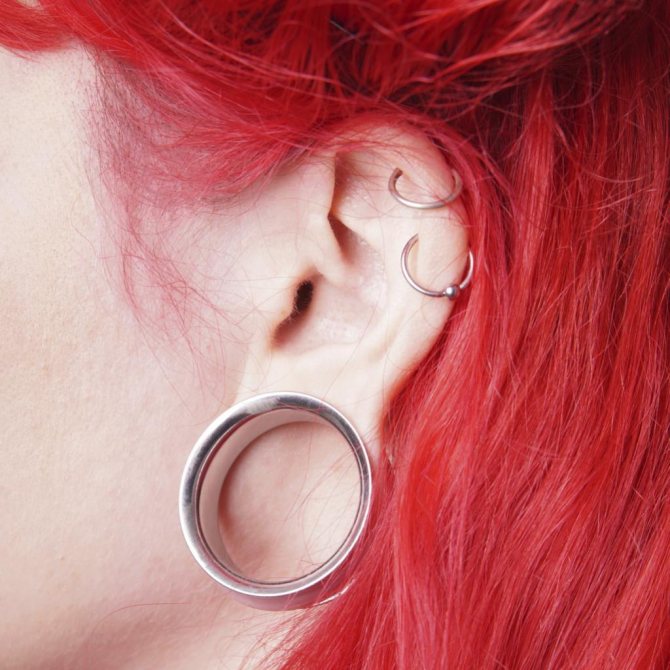

How long you can not wear earrings, so that the ears do not overgrow
If the punctures are fresh, then without earrings they will overgrow quickly - the body will treat wounds, which, in fact, are punctures in the earlobes. The exact amount of time is difficult to call, it depends on the individual body's ability to regenerate. Some people have their ears closed in 2 weeks if they do not wear earrings after the piercing, some people have them in 2-3 months.
If your ears have been pierced for a long time, they are unlikely to heal quickly. Usually, those who have had ear holes for a long time manage not to wear earrings for years, and nothing happens. The body has already "got used" to the holes in the earlobes and considers them "native", so to fight them is unlikely to want, and therefore they will not overgrow on their own. The exception is situations when the lobes are inflamed or when a special cream is used for regeneration.
Surgical method
It is worth noting that the hole for large tunnels can also be made by surgical intervention. This method is ideal for those who want to get wide openings rather quickly and as easily as possible.
The procedure for creating the holes involves making a small incision on the earlobe, into which a special earring is subsequently inserted, designed to further stretch the soft tissue, called a plaque. In some cases, a whole section of the lobe is cut out, but in this case you may end up with a very large hole.
In reviews of this technique of creating tunnel holes, it is quite often said that its big disadvantage is the increased risk of infection of the wound created. Moreover, such a large wound takes quite a long time to heal, which also delivers a large level of discomfort. It is worth noting that if you want to return the original appearance of the earlobe, you will need to re-visit the surgeon.
Plastic surgery
How to cover holes in the ears? According to reviews, the best way to cope with this problem is plastic surgery. Recourse to the clinic is recommended in all especially difficult cases, for instance, when there are big holes after tunnels, when the earlobes are severely deformed, when no other treatments have worked.
How do plastic surgeons reattach ear holes? They sew them up or they remove the defect with a laser. The procedure is most often performed under local anesthesia, and only in particularly severe cases will you have to go to the clinic. After the hole is sewn up and a normal ear canal is formed, the patient is sent home with a band-aid on the suture. The ear usually swells, swells and hurts after the procedure, so patients are prescribed painkillers. The stitches are removed in 7-10 days, and the entire recovery period takes 3 months. Within a year after surgery, you will not be able to pierce the ear.
The operation will leave a small, barely noticeable scar. It can be sanded down over time to make it even less noticeable.


